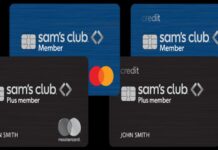Social Security Number Scams: Identity theft isn’t just a bothersome problem; it’s a financial disaster waiting to happen. Identity theft was reported to the Federal Trade Commission more than a million times in 2023 alone. One of the most important pieces of personal information that could be stolen is your Social Security number (SSN).
Your Social Security Number (SSN) is now a much more important way to prove who you are. Its original goal was to keep track of your wages and manage your retirement payments. If it falls into the wrong hands, it might be used to create credit cards, access bank accounts, and even apply for jobs in your name.
2025 Social Security COLA Increase: Will spouses receive the COLA increase in 2025?
You must safeguard your Social Security number
Protect yourself from identity theft! See our blog to learn more: https://t.co/P14T5hJOVa pic.twitter.com/3YNHTFlNDv
— Social Security (@SocialSecurity) April 2, 2024
These are some essential tactics to assist you prevent identity theft and safeguard your financial stability.
1. Examine Your Credit Reports Frequently
Examining your credit reports is one of the best ways to detect identity theft.
You may obtain these reports, which include a summary of all your open accounts, balances, and payment history, from well-known credit bureaus like Equifax, TransUnion, and Experian.
It may be a warning sign if you come across accounts you don’t recognize or strange-looking debt amounts.
Seeing inappropriate activity on your credit report at least once a year will enable you to take prompt corrective action.
2. Keep an eye on your bank statements
An additional important tool for detecting identity theft is your bank statements.
Regularly checking your credit and debit card statements will help you identify any questionable activity, such as unusual charges or higher-than-expected costs.
At least once a month, make it a practice to review your statements. If you notice anything doesn’t line up, get in touch with your bank right away.
3. Watch out for strange mail
Your identity may have been compromised if you start receiving bills or collection notifications for accounts that you never opened.
Look into this more if you begin receiving mail for accounts you don’t recognize.
Speak with the companies concerned for further information, and see if the account shows up on your credit report.
4. Examine your tax returns
Someone else files a fake tax return in your name to get your reward. This is called tax identity theft. If you go to file your taxes and see that someone else has already done them, your name may have been stolen.
Scammers may also pretend to be IRS agents to get you to give them personal information over the phone. Be careful at all times and make sure that anyone you talk to about taxes is real.
5. Examine your medical records
When someone exploits your personal information to obtain medical care, it’s known as medical identity theft. Examining your medical records and insurance claims can assist you in identifying this kind of fraud.
It’s time to look into this further if you discover costs for services you never received.
6. Examine your Social Security records
Lastly, you must keep an eye on your Social Security statements.
Notifications that don’t look right or inaccurate earnings records could be signs that someone is using your SSN to get benefits.
Get in touch with the Social Security Administration (SSA) as away if you think there may be fraud.
Although identifying identity theft is crucial, prevention is always preferable.
Make strong, unique passwords for all of your online accounts to begin. Use more than one form of authentication if you can.
Be careful when giving out private data, especially over the phone or on Wi-Fi networks that might not be safe.
Also, don’t forget to keep important papers, like your Social Security card, in a safe place.




